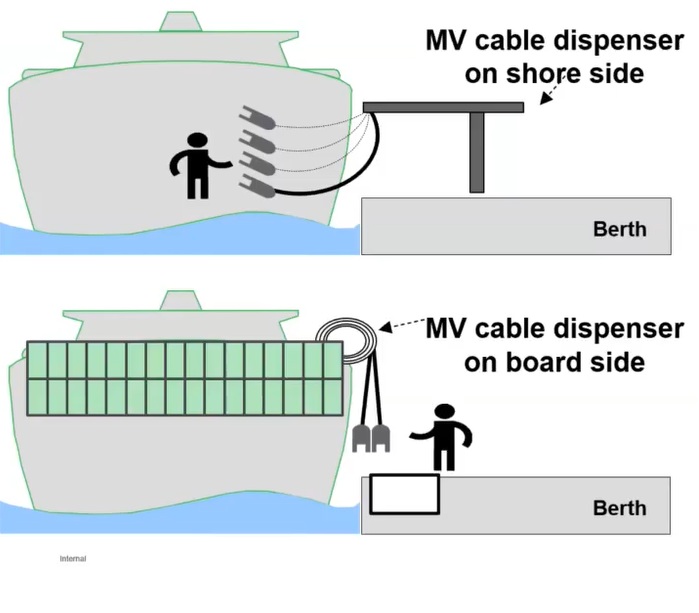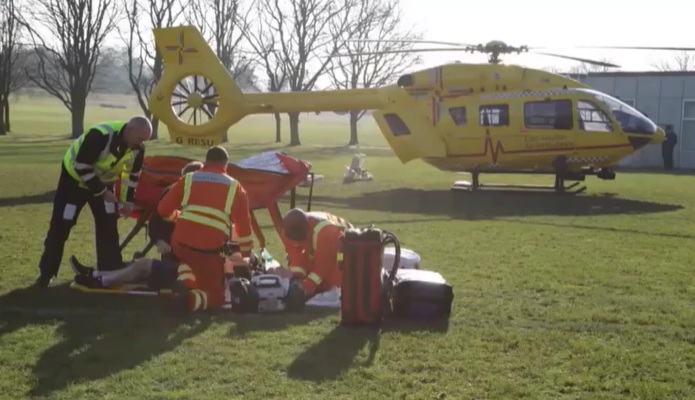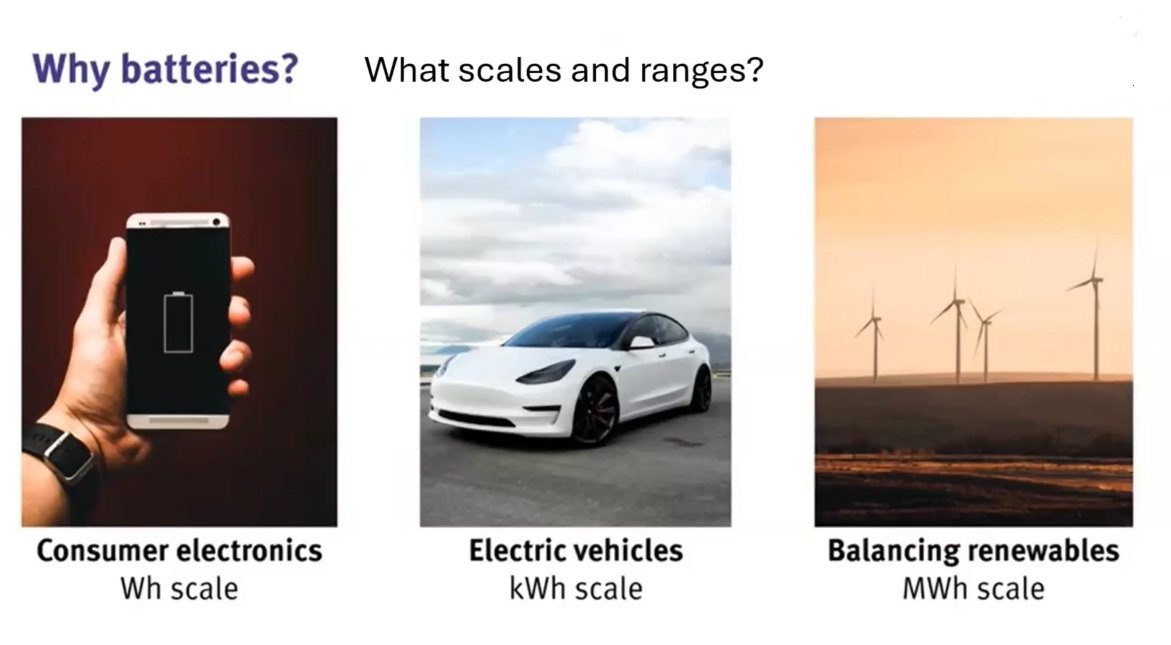Next NES Event
Places of Interest
Are you looking for somewhere with an engineering theme to visit? Why not try our Places of Interest map on the Useful Info menu?
Are you looking for somewhere with an engineering theme to visit? Why not try our Places of Interest map on the Useful Info menu?
Welcome to the Norwich Engineering Society, an active forum dedicated to fostering the exchange of ideas and experiences among all those passionate about engineering — past, present, and future.
For over a century, we have focused on the people behind groundbreaking innovations and their visionary concepts. Our mission is to enlighten, support, and develop our members in Norfolk and beyond. We achieve this through unique engagements, dynamic events, informative seminars, and insightful publications.
By championing the diverse disciplines within engineering, we ensure its continued evolution and relevance in an ever-changing world.

Shaun Faulkner, of Schneider Electric, opened his talk with a general overview of energy consumption in the marine environment particularly that in an operating port environment. In his opinion, it is clear that any new developments in ports have to be powered by electricity especially as there is a drive for new vessels themselves to be powered by electricity.
This implies that when a vessel of this type docks it will have to recharge its running batteries with energy as well as requiring standby power to keep its internal systems running whilst being docked. The implications for a given port in terms of supply requirements can be very demanding especially in the transition from the traditionally oil fired ships to the EV vessels. This is especially the case for a very busy port like Dover which is using its current land area almost to capacity. How does this port achieve the transition without causing significant disruption to current trading position? As Shaun pointed out another drive to moving to electrification is that most ships are significant polluters if they are oil powered. To minimise this most major shipping areas are now subject to regulations that limit the use of oil firing when docked. For instance Dover falls within the North Sea Emissions Control Area that requires all vessels to switch to shore based electrical power soon after docking.
The demands that a docking ship requires can be quite large. For instance when a 4000 passenger cruise ship docks in a port it needs to be supplied with sufficient power to keep its facilities, such as restaurants, air conditioning etc, working. This is equivalent to the demands of a small town. Some cargo ships especially those carrying frozen goods also have high power needs. Shaun spent a significant part of his talk outlining the problems involved and how they are being resolved. A particularly problem that UK ports face is that of synchronising AC supplies; most international vessels have 60HZ equipment whereas UK power is supplied at 50HZ.
Shaun used the final part of his talk discussing how the port of Dover was setting about meeting the transition challenge especially as one of its major ferry customers had made the unilateral decision to change all its vessels to electrical power. As already mentioned Dover is a 24 hour port that has already used most of its available land and is very constricted in usable corridors for the extra power needs that the transition requires. Shaun stated that there are solutions available but they are not going to be easy and they are certainly not going to be 'pain free'.

Our 2025-2026 Charity Lecture was given by Matthew Jones; the current CEO of the East Anglian Air Ambulance Service, EAAA which has one of its main bases at Norwich International Airport; the other base is currently at Cambridge Airport. The EAAA started in 2001 with one helicopter at Norwich flying one day a week with just two paramedics. It is now a 24 hr service 7 days a week with a core team of two pilots, one doctor and one paramedic per helicopter; the trust has a helicopter available at each of its main bases.
There is no direct request mechanism for the EAAA. All its flights come under the auspices of the East of England Ambulance Service whose Controller decides which branch of the service is best suited to a given need. Each EAAA base has a small fleet of suitably equipped road vehicles to cover the eventuality of poor flying conditions or inappropriate landing areas in the incident locality. In any given incident priority is to second guess the patient need and to provide appropriate care in time at the appropriate facility. noting that some hospitals are specialist centres, As Addenbrooks Hospital is the only neurological trauma centre un the East of England all serious head injury need to be treated there first.
The nature of the typical EAAA task has changed over the years. In the early days the activity was that of a fast ambulance with the patient being transported as quickly as possible for specialist treatment at a regional centre. However, medical experience has shown that if certain processes are carried out much earlier in an incident then the chances of a good outcome are vastly improved. So a present day flight is more about taking medical expertise and equipment to an incident as quickly as possible to expedite these processes to stabilise a patient.
Matthew told us that in 2024 EAAA was called out about 3000 times with about 2000 actual patient interactions being undertaken. The difference between the two being that a call out was stood down once further information was available it was clear that the EAAA skills were not required either because happily the patient was not in a severe state as first thought or very sadly the patient was beyond help. Matthew indicated that the EAAA was of the opinion that it is better to be in the air early as in severe recoverable situations time is always of the essence. Matthew pointed out that once it was clear that EAAA services were not required at a given locality the service could be deployed to another call out. The call out procedure is very judgemental and Matthew is of the view that this is an area where AI can be used to bring about positive improvements to EAAA operations.
In the concluding Q&A session Matthew indicated that about a third of the EAAA income came from the lottery that they run about quarter came from bequests and the rest was made up from a wide variety of activities such as talks and public meeting collections.

In the first, very well attended both in person and online talk, of the 2025-2026 season, Richard told those present that electric batteries had been at the forefront of modern science and technology since the late 1700s. Indeed, the battery had been the main source of electric current until about 1870 with the introduction of electric generators based on electromagnetic induction. The early work understanding how batteries work was important to the atomic theory of matter and led to vital steps in the birth of present day thermodynamics.
A big step in the development of battery chemistry was the concept of a reversible REDOX chemical reaction where one of the constituents gives up an electron (oxidation) and the other gains an electron (reduction). A battery cell consists of separating out the two processes and making the electron exchange much easier via an external low resistance conducting path rather than via a much slower internal path (self discharge path). The latter is usually achieved by using some ionic conducting only separator; either a salt bridge as in the case of a Daniell Cell or some complex organic material for current Li ion batteries.
Having outlining how batteries worked using the Daniell cell as a case study, Richard then spent some time looking at the current market leading battery chemistry based on Li ion systems. Having outlined the chemistry of this system he looked at why this approach had some significant drawbacks of which environmental impact and price volatility were two important ones. Lithium salts as a resource are very nonuniform-ally distributed in the Earth crust; China and the salt lake in the Atacama Desert in Chile being the two largest. Extracting the ore from the latter has caused significant damage to the latter causing large regions to become uninhabitable. Another resource problem associated with Li ion batteries was that in some earlier forms of this chemistry Cobalt was used to improve its efficiency. This need led to some unethical practices in the mining industry particularly in some of the Equatorial African Countries. These practices were reduced somewhat for static operations when chemists discovered that Iron atoms were nearly effective as Cobalt. This meant that in static energy storage applications, where overall weight is not at a premium, the Iron batteries could easily substitute for the Cobalt enhanced ones.
Since the advent of Li chemistries researchers ave been looking at several chemistries thatt might be used in its place. Richard looked at the elements, such as Sodium and Potassium whose distribution is much wider than Lithium and much less damaging and costly to extract to see if they might be used instead. He reported that Sodium, in particular, showed much promise. Indeed, in static situations there are now several commercially available cost effective large scale batteries in situ. Sodium ion batteries have one particular advantage over their Li ion cousins in that they can operate effectively at much lower ambient temperatures.
Richard concluded his talk by briefly outlining another possible solution to the static energy storage problem that is the flow battery.

A small group of 8 members assembled on Thursday 18th September to explore the off-grid power at NES member Philip Williams’s house in Halvergate Marshes.
Philip kicked off with the history of how he and his wife Julie ended up buying a house with no mains electricity, no phone connection, surprisingly with mains water, in the middle of nowhere. It did however have a diesel generator. The house itself was in a bit of a poor state, but you wouldn’t know it today, which is testament to the hard work and investment that they have put in over the years.
Philip then showed us the wind turbine in his garden which sits atop a 9m mast, generating a peak of 6Kw. It was whizzing round on the windy day that we visited, helped by it’s south westerly location and a lack of obstruction by buildings or trees.
Next we had a quick look at the solar panels on two sides of the roof of the house, a fairly common feature these days.
Then we got to the really interesting part – first of all a shed with 30Kwh of lead-acid batteries. Philip described in detail how these worked and showed us the mechanism for adding distilled water to all of the batteries from a single point. In the next shed was – Philip’s workshop, which apart from a neatly arranged array of tools, contained the somewhat elaborate controls for the wind, solar, oh and the 16.5 Kva diesel generator, which kicks in automatically when the batteries fall below 30% charge. Philip gave us a circuit diagram to look at while he described in detail the function of each component. One surprising element was a 6Kw resistor which is used to dump heat when the batteries are full and there is too much electricity being generated by the wind turbine – being off-grid means there is no opportunity to export the excess to the grid. It’s a nice headache to have too much energy! The main source of energy for cooking and central heating is by bottled gas, but every opportunity is taken to use the generated electricity.
Philip explained how, despite having mains water, issues with leaks between the fairly distant meter and his house caused headaches, mainly identifying where the leak is.
He also described the difficulties in obtaining a reliable and reasonably fast broadband connection. There is a BT line, but it is about 6Km to the cabinet, with no prospect of fibre to the premises. After years of experimenting with a variety of solutions, they have finally settled on cell phones and radio broadband, with the hope of 5g mobile reaching them some time in future.
If that whets your appetite and you are interested in reading more about Philip and Julie’s house, Philip has created an excellent set of web pages.
The visit concluded with tea/coffee cake and biscuits which Julie had kindly prepared. As is usual with NES events, there was extensive discussion of a never ending range of topics until it was time to go. Many thanks to Philip and Julie for their hospitality and a fascinating visit.